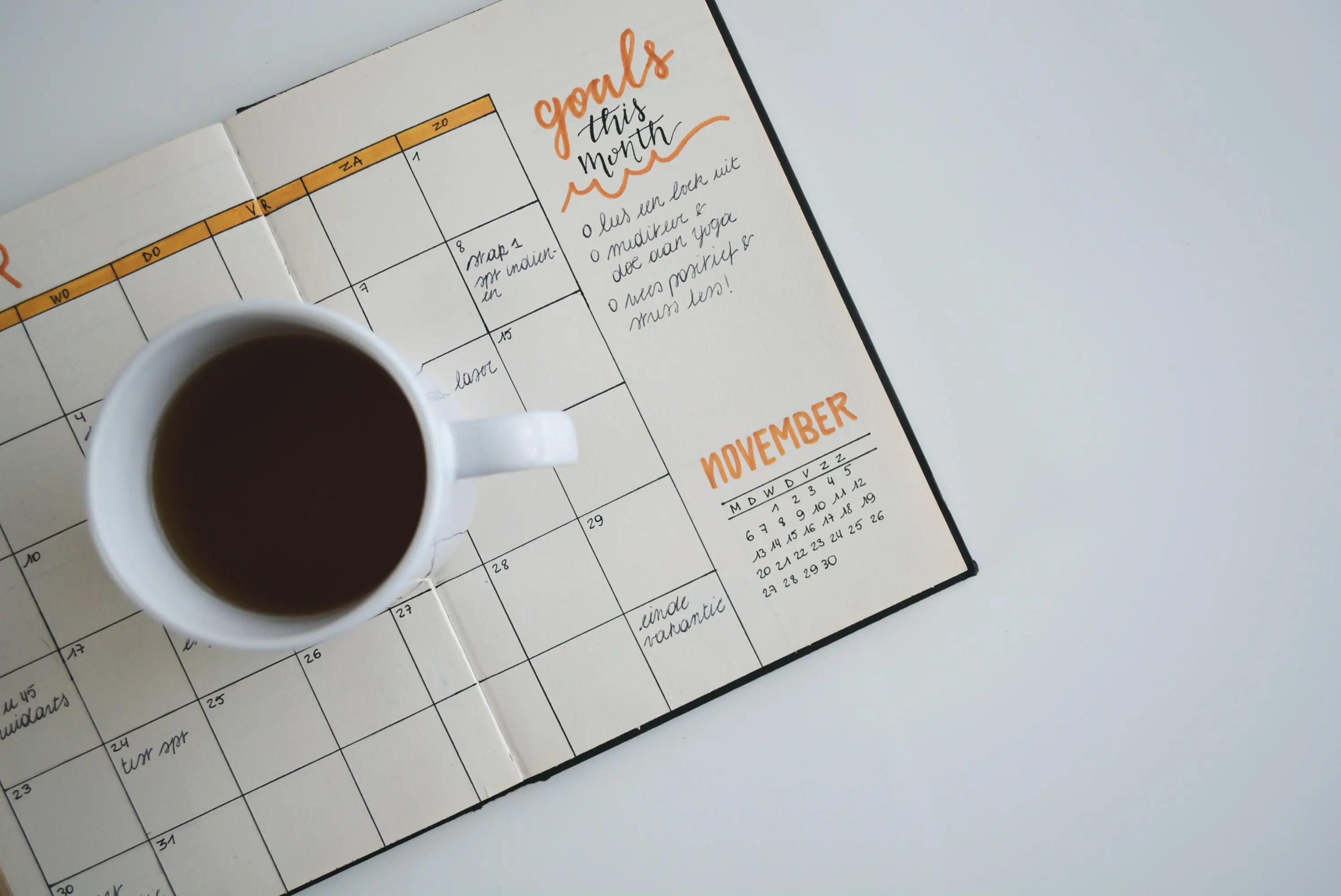Some of the links in this post are affiliate links. This means if you click on the link and purchase the item, we will receive an affiliate commission from the vendor at no extra cost to you. These business relationships allow us to keep bringing you great EatMoveHack content. All opinions remain our own.
How to build a workout plan in 10 minutes
There are so many styles, kinds, and trends of exercise routines out there that it can be overwhelming. Where do you start? Can I build a workout plan on my own? The answer is yes and we will show you how.
Go to the gym or work out at home, do strength training or cardio, use a meal plan, download workout apps, there are endless possibilities. Today we are going to break down a few simple steps to help you build a workout plan in 10 minutes and achieve your fitness goals.
What type of exercise do you need?
In order to answer that question and build your work out plan, determine what is your goal: lose weight, build up muscle, running a race, etc. It would also be good to set up a long term goal and timeframe linked to it, such as being able to run 5K in 2 months, or lose 10 pounds in 2 months, etc.
 Next, you should decide how much time per week you can realistically dedicate to your exercise routine. The only person you have to be honest with here is yourself. Break down your week and try to find a consistent window of time that you have available.
Next, you should decide how much time per week you can realistically dedicate to your exercise routine. The only person you have to be honest with here is yourself. Break down your week and try to find a consistent window of time that you have available.
It is important to set realistic goals so you can stick to your plan. In order to get results from a fitness routine, whatever your goal is, you need consistency. If you know a 45min time slot is doable then grab it. Don’t try to plan a workout that will take 2 hours with the assumption that you will find the time.
Finally, decide where you want to work out: at home (and if so check out our home workout ideas here), at the gym, in the park down the road? A combination of those maybe? Again, think practical so you can commit to it realistically. If the gym is 45 min drive when the traffic is bad, you might just skip it….so, either plan accordingly with your time allocation or consider other options.
Break Down Body Parts:
As you start looking at workouts consider that your body is necessarily broken down into some major zones. To keep it simple we will talk about them broadly – chest, back, shoulders, core, and legs.
If you are looking to maximize your exercise time, building a workout plan that takes advantage of complex movements (those that hit more than one major muscle group) is a good technique.
As you progress in your fitness, it might make sense to do some laser focus on a particular muscle group (like a hammer bicep curl). However, most of us can greatly benefit from compound movements over single focus movements.
Let’s talk about what these complex movements are:
[table id=9 /]So, now you have a good idea of some complex movements that you could use in building a workout plan that will get results.
Break Down Your Available Time:
Now that you know how long you can work out, and you know what types of movements you might want to include…let’s put them into a plan.
We will use 32 minutes (I know that is a weird time but see below) as the available time for your central workout. You will need about 5 minutes on the front for warmup and about 5 on the other side for a cool down. So, for a 32-minute central workout plan on having 42 minutes.
With these 30 minutes we like to pick four movements that complement one another. Let’s say Russian Kettlebell Swings, Push-Ups, Wall Balls, and Pull-Ups. You can see that these workouts hit the entire body. I’m not replicating one type of workout (for example I would not want to do kettlebell swings and kettlebell snatches, or dips with push-ups).
Next, I think about which movement is more aerobic than anaerobic. This movement will be the one that I will do the most during this 30 minute period. Then I look at the movement that works a large muscle group that can withstand higher volume as well. This will be my second-heaviest movement.
This is how we would set up this workout:
[table id=10 /]I would repeat this cycle four times..for a total of 32 minutes. Play around with the weights and the reps. You want to shoot for about 20 seconds of work and 40 seconds of rest/movement to the next station.
In 32 minutes you will have achieved a solid, full-body workout. If you want to go longer, just keep repeating this 8-minute cycle as long as you would like (60 minutes, which is our personal favorite, is 8 cycles)
We think it is a great idea to have 2 or 3 of these blocks that you can interchange throughout a week.
Developing a Balanced Exercise Plan
No matter what your goal is, having variety in your workout is important. First, it will help you stick to your routine. Second, it will help you reduce the risk of injury if you are trying something new like running or weight training. Third, it will provide physical balance, which is often overlooked.
Now that you have chosen how many hours per week you can dedicate, try to build a schedule that is balanced over the week, such as 5 workout days and 2 days of rest for example. An important note here. Rest days are important….some would argue more important than the workout days. This is especially true as you progress in your fitness. Your body needs time to heal and grow.
Depending on your goal, then begin selecting work out activities that help you achieve that defined goal. However, don’t limit yourself just to that goal…again, remember balance is important.
Muscle Growth:
If your goal is muscle growth, you still might want to run or swim during one of your workout sessions per week.
You might even find something that is both a good workout and fun, check some of our ideas here.
 Running:
Running:
If your aim is to improve your running, think about other cardio training that could complement and use different muscles from your usual run. Maybe cycling, swimming, yoga, or rowing would complement your efforts to build your cardio motor.
In addition, think carefully about weight training as well. Running is a very singular plane sport. This can lead to injuries in stabilizing muscles if you are not careful.
Weight Loss:
If your aim is weight loss, do not forget that a big portion of your goal will be achieved through a healthy diet plan. You might want to consult a health professional that can also advise on what type of work out would be best for you. You can only outrun a bad diet for so long. Eventually, the diet will destroy your efforts to lose and maintain weight loss.
We really recommend noom as a great place to start if your goal is weight loss. You can work with the team at noom to get your diet on track so that you can focus on your building a workout routine.
Finally, write your plan down and input it in your phone calendar or whatever tool you are using to keep track of your schedule.
By making sure you have it available at all times, it will be easier to remember. Once again consistency is important, but of course changes of plans happen all the time, or you might be feeling off for a few days. What is important is to just get back to it the next day.
How Much Should You Do?
It really depends on your goal and your current fitness ability. Our advice here is once again to have realistic expectations. You cannot expect to go from zero running experience to a marathon in a few weeks, and this is valid for all types of workouts!
 If you are building a gym plan for the first time, choose 5 or 6 exercises that are going to help to achieve your goal (full bodywork, upper body, etc) and start by concentrating on those.
If you are building a gym plan for the first time, choose 5 or 6 exercises that are going to help to achieve your goal (full bodywork, upper body, etc) and start by concentrating on those.
You can pick a duration and/or a number of reps for each (say for example 3 to 5 sets of 10 reps), and focus on nailing these before you increase the numbers or change the exercises.
Achieving a goal in running will be the same, focus on what you can do to start with and slowly increase the pace or the distance. Some running apps like (I found RunKeeper, Nike Run Club, and Strava for example) will have built-in plans that you can adjust according to your objective.
Should I Run Every Day?
This is a question that comes back often with beginners in running trying to build up resistance or train for a race. There is no short answer such as yes or not, but instead, the answer is: it depends on how much you run.
If you run long distances, running every day is strenuous on the body and most research shows that it is probably too much. Joint pain, muscle ache, or any type of injury is a clear sign, but you should also check general fatigue and soreness.
For new runners or short distances, doing a 30min run a day, even every day, should not be a problem. However, also do check for any signs that you are overdoing it
Do I Have to Use a Special Diet With my Workout Plan?
It is not necessary, especially if you are not aiming for weight loss. If this is your goal however, we suggest that you consult a healthcare practitioner to build a diet and exercise plan that will be suited for you. Depending on your health check, your doctor might also recommend supplements such as vitamins or magnesium.
If your aim is muscle growth, you might want to check potential supplements such as proteins or creatine (you can check out our article on the best biohacking products here) to boost your progress.
When you have your plan all written down, there is only one thing left to do….put your workout outfit on and get started!

